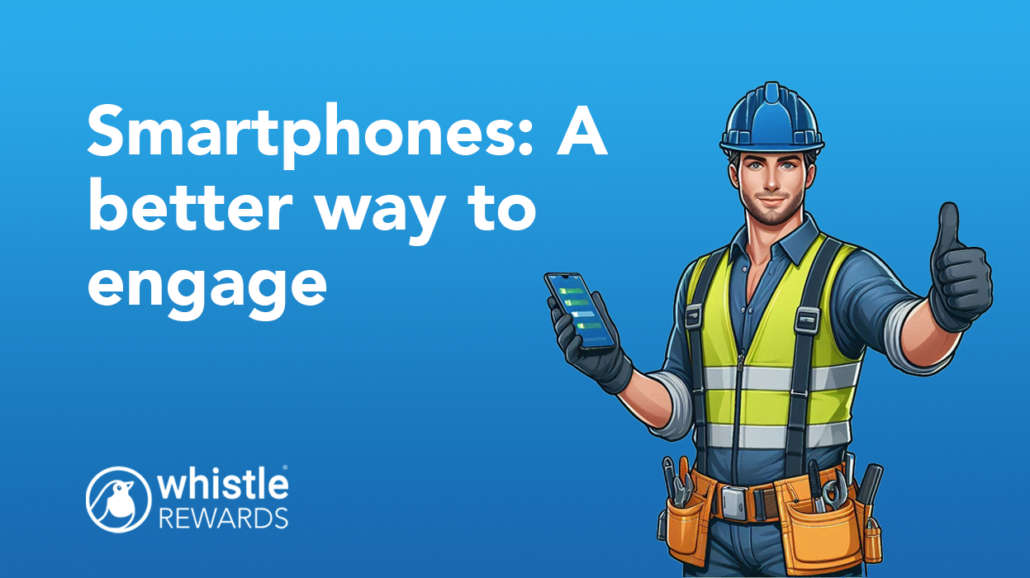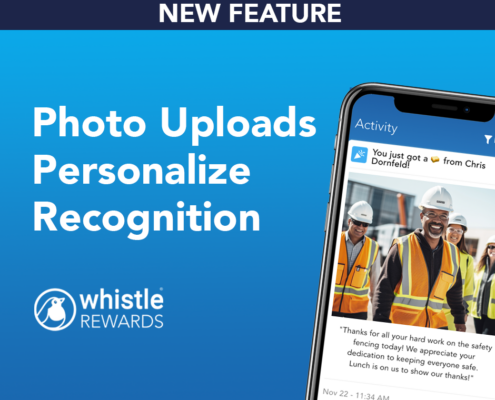Smartphones: A better way to engage
Smartphones: the best way to engage
Steve, a veteran construction manager, hesitated to introduce new technology to his job sites. He thought: Do all my workers really have smartphones? Will they see a text message? It seemed easier to stick to the old ways of communicating through radios and paper forms. But one day, Steve noticed something that changed his mind. During a break, nearly every worker—young or old, skilled or laborer—was checking their smartphone. At that moment, he realized his assumptions about tech adoption were outdated.
As a leader in construction, you may share Steve’s initial hesitation about fully integrating smartphone technology into your workflows. It’s a common concern: Are smartphones practical for every worker on-site? The short answer is yes, and underestimating smartphone adoption is holding your team back from becoming more connected, efficient, and safe.
Already in Everyone’s Pocket
The idea that construction workers aren’t comfortable with smartphones is simply not true. According to Pew Research, more than 95% of adults under 65 own a smartphone, and this includes your team. In fact, many workers rely on their smartphones as their primary tool for communication and accessing information.
Even in construction, where traditional methods of communication—like radios and face-to-face conversations—have dominated, smartphones are everywhere. Workers use them for personal communication, social media, and yes, even for work-related tasks. Whether it’s checking emails, looking up plans, or receiving updates, smartphones have become as essential as a hammer or drill.
By clinging to outdated ideas about smartphone adoption rates, you might be missing out on the opportunity to modernize your operations and better engage your team.
It’s Not the Technology—It’s the Approach
The hesitation to introduce more smartphone-based tools often stems from the belief that workers don’t want to use more apps. And in some ways, that’s true: no one wants to download another app that complicates their job. But that doesn’t mean the technology itself isn’t welcome. The key is to make sure that any technology you introduce fits into your workers’ daily routines and makes their job easier, not harder.
For example, platforms like Whistle Rewards allow leaders to send personalized recognition or important messages straight to their workers’ phones—without requiring app downloads or passwords. Your team doesn’t need more hurdles to jump through; they need simple, effective communication that reaches them where they are. Workers are far more likely to engage with tech solutions that don’t require added complexity.
Don’t Assume a Disconnect
Another common misconception is that older workers or those in more traditional roles are resistant to smartphone use. But, across the board, smartphone adoption is near-universal. In fact, 15% of adults are now “smartphone-only” internet users, meaning they rely solely on their phones to stay connected, whether they’re on social media or keeping up with work-related information. This is especially important in construction, where many workers may not have easy access to a desktop computer on-site.
You might be surprised to find that workers of all ages and skill levels are already comfortable using their smartphones for various tasks. By integrating smartphone-friendly communication, updates, and rewards systems, you are reaching your entire team without the need for traditional computer-based platforms.
Safety and Efficiency: Instantly at Your Fingertips
Smartphones don’t just connect your workers to each other—they connect them to you. As a leader, you have the opportunity to make real-time decisions and communicate instantly with your team. Whether it’s sending safety alerts, coordinating changes to the schedule, or recognizing someone’s hard work, smartphones allow for faster responses and greater flexibility on-site.
Many leaders believe they’re limited by the need for face-to-face check-ins or manual updates, but that’s no longer the case. Smartphones provide a direct line to every worker, ensuring that even if they’re spread across a massive job site, your message gets through.
Take safety as an example: Instead of relying solely on morning safety briefings, you can send critical updates or reminders throughout the day. If there’s an immediate hazard, a text or notification can reach the right people instantly, potentially preventing accidents and ensuring everyone is on the same page.
Adapting to New Realities
Leaders who continue to resist smartphone technology because of outdated concerns are doing a disservice to their teams. Smartphones have become integral to daily life, including in the construction industry. Ignoring this fact doesn’t protect your team—it only limits their ability to communicate and engage effectively.
The idea that your workers won’t adopt smartphone-based tools is a myth. The more you delay integrating this technology, the further you fall behind in terms of efficiency, safety, and team engagement. Embracing smartphones doesn’t mean complicating processes; it means using the tools that are already in everyone’s hands to make your operations smoother and more effective.
Simplify, Don’t Overcomplicate
The key takeaway for construction leaders is simple: embrace smartphone technology, but do it in a way that feels natural to your team. Avoid the temptation to overload workers with multiple apps. Instead, choose systems that are streamlined and designed with simplicity in mind. Tools like SMS-based communication or platforms that don’t require downloads can make all the difference.
Recognize that your team is already familiar with smartphones, and with the right approach, they’ll embrace smartphone-based tools that improve safety, productivity, and morale on the job site.
Lead with Confidence
Don’t let misconceptions about smartphone use hold your team back. The tools for better communication, safety, and team engagement are already in place—right in your workers’ pockets. By adopting a forward-thinking approach to smartphone integration, you can streamline operations, improve safety protocols, and foster a more engaged workforce.




















